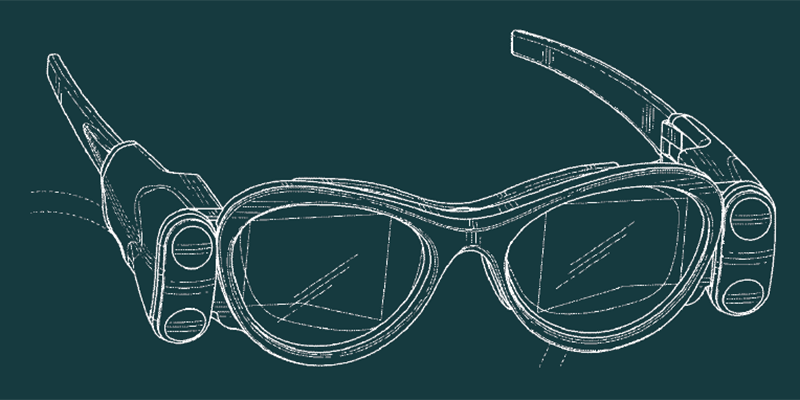A patent application from the Prince Mohammad Bin Fahd University (PMU) in Saudi Arabia features a smartwatch that counteracts tremors by vibrating the nerves in a person’s wrists.
A tremor is an involuntary, rhythmic shaking of one’s hands, head, torso, legs, and voice, commonly seen in older people. Frequent and severe cases are debilitating, precluding affected individuals from day-to-day tasks like eating or getting dressed.
The exact cause of tremor is unknown. Various neurological and psychological conditions have been linked to the disorder, which has also been documented as inheritable. Additionally, bouts of trembling have been attributed to factors ranging from trauma to fatigue; from caffeine to smoking.
There are over 20 types of tremor, essential tremor (ET) being the most common trembling disorder, estimated to affect around 7 million Americans or about 2.2% of the U.S. population. It is characterized by shaking in both the hands and arms, and is often confused with Parkinson’s disease.
Treatment options for tremor patients include anti-seizure medications, deep brain stimulation (DBS) surgery, and physical therapy. PMU’s patent filing describes a more readily available solution built into smartwatches: technology used by one in every five people in the U.S.
The invention reduces tremors via a process known as “stochastic resonance,” demonstrated in a 2014 study where the application of mechanical stimulation and white noise to patients’ hands delivered greater improvements than mechanical stimulation alone.
PMU cites a related patent for tremor treatments that involve sending an electrical, mechanical, or chemical stimulus through a peripheral nerve site of the hands. This stimulation normalizes the nerve’s neural firing, reducing the tremor. Peripheral nerve stimulation is believed to treat tremors by dephasing, overriding, or obscuring abnormal brain circuit dynamics. DBS works in a similar manner, wherein surgically implanted electrodes send high-frequency electrical signals to the thalamus, which handles sensory and motor signals.
Another study mentioned in the patent application showed that wrist-worn accelerometers can detect tremors in patients with Parkinson’s Disease. PMU says its invention instead detects tremors by monitoring the environment with a camera, before applying stochastic resonance on nerves in the wrists.
![An illustration of PMU’s wearable band and the placement of the motors [M1-M5], camera [260], as well as sensors for temperature [262], blood oxygen [264], and heart rate [266].](https://parolaanalytics.com/wp-content/uploads/2021/08/An-illustration-of-PMU.jpg)
An illustration of PMU’s wearable band and the placement of the motors [M1-M5], camera [260], as well as sensors for temperature [262], blood oxygen [264], and heart rate [266].
An exemplary embodiment of PMU’s smartwatch includes a camera that can monitor for tremors throughout the day. It captures 10 images per second and the spatial deviations among the images due to vibration are taken as a sign that the wearer is experiencing tremors.
To carry out stochastic resonance, the device would have multiple motors. Besides size and cost limitations, the number installed may depend on the amount of nerve stimulation a tremor patient needs or tolerates. Each motor may vibrate in the range of 0-12,000 rpm; this means they can work around twice as fast as the vibration motors found in phones, which are able to turn about 100 times a second.
PMU says the goal is to trick the brain by creating a “small chaos” stimulation in the location of the watch. Vibrating the motors at randomly generated frequencies is meant to distract the brain and make it stop ordering the tremor.
In a 5-motor smartwatch, for instance, motors 1 and 2 are configured to vibrate at different frequencies. If the device detects a less than 50% reduction in the tremor, motor 3 is activated at yet another distinct frequency. Meanwhile, motors 4 and 5 would emit audible noise in frequencies effective at reducing tremors. The motors would stay on for 5 minutes.
The watch stores its operating parameters whenever it achieves a tremor reduction approaching 60%, or at most 10% below its historical best reduction. Data from this body profile undergoes high-level analysis on a cloud server storing a tremor control application. Motor tuning parameters are then communicated back to the smartwatch to improve its ability to combat tremors. This information, along with those gathered by the device’s other sensors, can be used to generate a health report for the wearer.
The featured patent application, “Smart Watch for Tremor Monitoring and Control”, was filed with the USPTO on February 11, 2020 and published thereafter on August 12, 2021. The listed applicant is Prince Mohammad Bin Fahd University. The listed inventor is Nassim Khaled.






